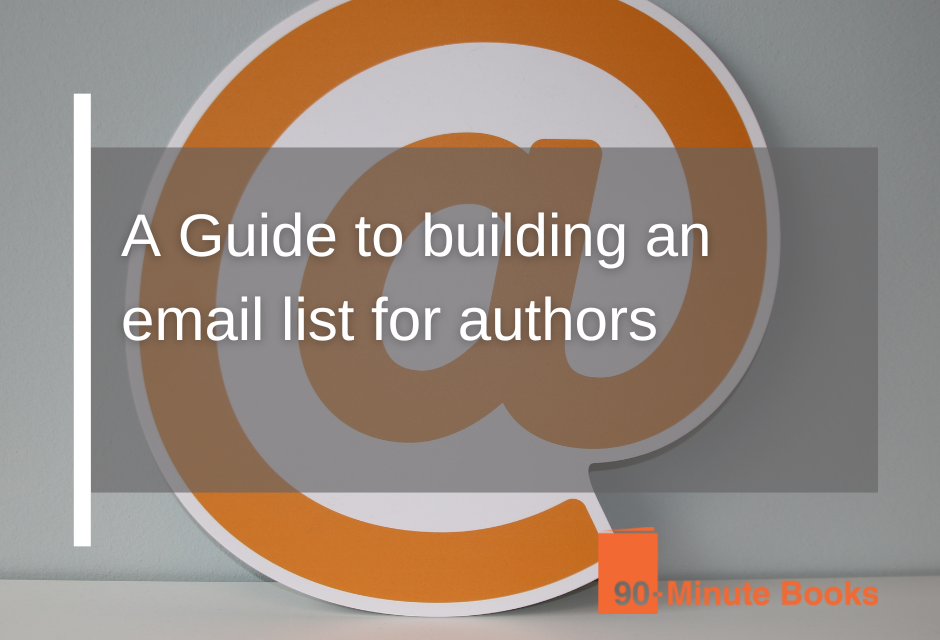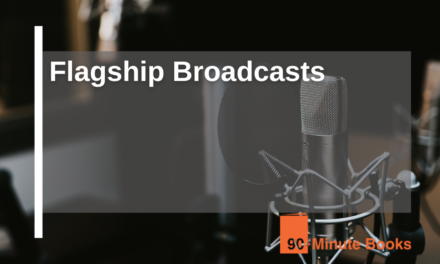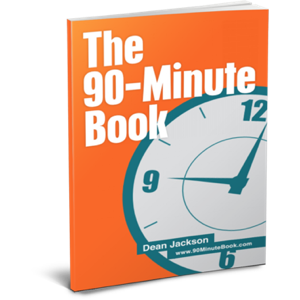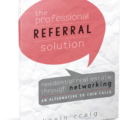A question often asked is,”‘How can I build an audience for my first book before it’s released?” Most authors don’t realize they should start building their author mailing list a few months before their book launch. The roadblock they face is that they do not have the knowledge or skill required. Although it may be difficult, it is possible.
Today, it is important for authors to have an email list, regardless of whether they are self-publishing or traditionally publishing a book. Unfortunately, there is no one-size-fits-all answer to this question. the post below will divulge methods that can be used to help grow your email list. We will give you a clear and confident idea of building your email list if you are ready to begin this journey.
What is an email list & Why is it Important for Authors
Email is still one of the leading ways to build trusting and long-lasting relationships with readers, even with all the technological advancements. It will turn your avid fans into advocates. So what is an email list? An email list is a list of email addresses of people that have subscribed to your website, blog, or social media channels. This list can send out updates, announcements, or other information to subscribed users. For example, if you order something online from a new website. You need to enter your email and other information during checkout.
By clicking the submit button, you agree to join the company’s email list and will start to receive promotional emails from them. Why are email lists important to authors? Every person subscribed to your email list will receive your message when you send it out, which is why email marketing is an effective way to reach your audience. Email lists allow authors to communicate directly with their fans, readers, and subscribers. This, in turn, fosters a relationship of trust and mutual respect. Having direct communication with your fans is powerful. To maintain your readers’ trust, you should offer more products, services, and content that they will find interesting.
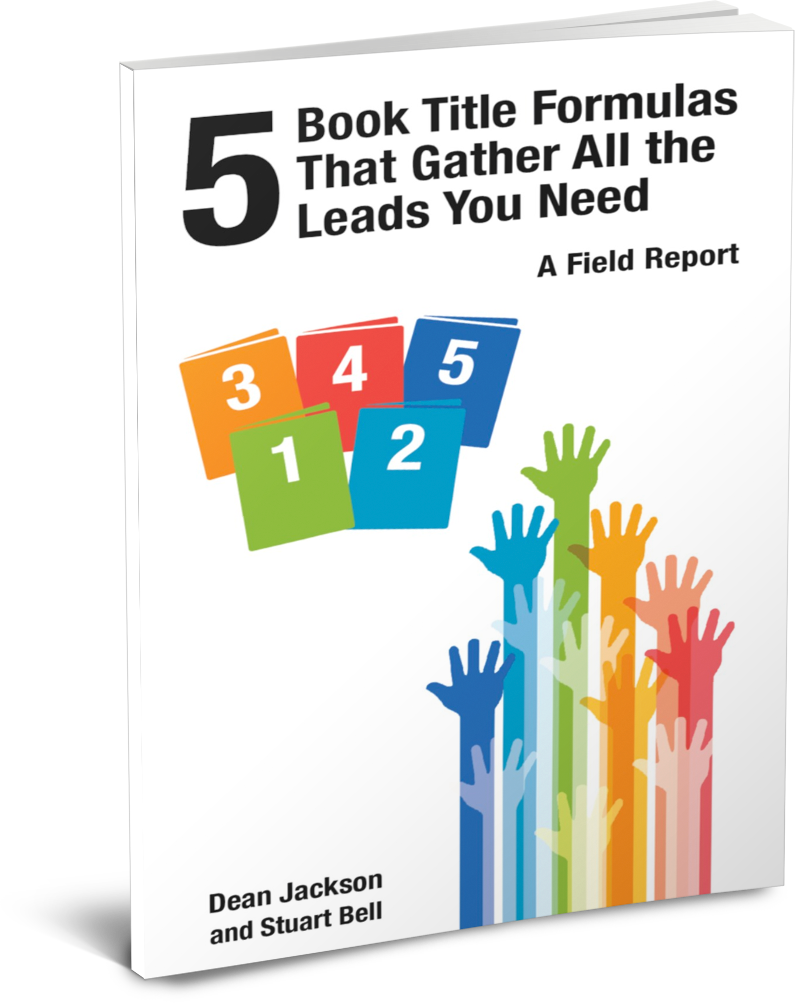
FREE BOOK
Discover the 5 Compelling Book Titles Types that create an ‘I Want That…’ response.
4 types of content to send your readers
An author must send their audience four types of content to nurture their relationship, sell their books and other products, and create more in the future.
These four types of content are:
1. Newsletters
Newsletters nurture your relationship with your subscribers.
We’ve discussed building your email list on a solid foundation so you can nurture it effectively. To have a strong relationship with your readers, you must have a solid foundation.
It can be used to notify them of new products or services, give them tips, announce events, or provide any other information you feel would be of interest to them. Your newsletter is a way to stay in touch with your audience. Instead of directly asking your fans to buy your books, you’re providing them with a lot of content to show that you’re one of their favorite authors.
Produce a newsletter to give your readership reliable, regular updates on your work, experiences and ideas.
2. Promotions
Showing your subscribers how much you appreciate them is a great way to keep them returning for more. Give them special promotions or first access to new promotions to show your appreciation. This can be promoted in your newsletter or through a dedicated email.
You can let your social media followers know they are getting special promotions and add a link to subscribe so they can access the promo within the next 24 hours.
Here are a few ideas of things you can promote:
- Book launches
- New products
- Services (like coaching or consulting)
some authors have used ConvertKit’s Visual Automations Templates to create a promotion using the “Pitch Your Book with a Free Chapter” template, designed specifically for authors.
3. Updates
Your subscribers care about you. They want to know your plans and when your next book will be released. The people on your email list signed up because they want to stay up-to-date with you and your content.
Your email subscribers are the perfect audience to share updates with. For example, update your audience with your progress if you create a new book. Let others know what stage of the process you are in and give them short snippets from your book to excite them for the release. Get people excited about it in advance to ensure high sales when your book is released.
Keep your audience updated on what’s going on in your writing world. They’ll be excited to hear about it!
4. Surveys
An email list gives you direct access to talk to your readers and fans, which is one of the best parts. Asking your email list what they want to see from you is a great way to gauge what type of content they’re interested in. This way, you can produce content they’re more likely to engage with and enjoy.
Surveys can help you determine what to focus on for your next project. Involving your audience in your writing and creation makes them more connected to the final product. What topics would your audience like your next book to cover? What would they like to see more of from you?
Choose an Email Platform
What is an email platform? You might wonder. An email platform is a database that stores your email lists. It allows you to communicate with your readers and fans on a large scale. You should be aware that an email platform does not encompass Gmail, Yahoo, Hotmail, or any other email providers you use to communicate with friends and family or for personal tasks.
Think of an email platform like your lounge. Your website is where readers/subscribers can learn more about you and your work. Your email platform is a place where they can connect with you on a more personal level. It enables you to develop a rapport and converse with your eager admirers.
1. Constant Contact
Constant Contact is one of the world’s largest and fastest-growing email platforms. This email service is beginner friendly and easy to use. You can do many things with your email lists, such as creating successful email campaigns, that go beyond simply creating the lists.
2. SendinBlue
This software offers the ability to create customized marketing campaigns and track the results in real time. SendinBlue is a software that allows you to create and track custom marketing campaigns for your business using SMS and email. The email tools offered by this company are easy to use and create beautiful, engaging emails. Their email editor is very simple to use, even for beginners.
3. Mailchimp
MailChimp is one of the most popular email marketing platforms globally, as it offers a free email platform plan. Both SendinBlue and MailChimp have easy-to-use drag-and-drop email builders. It also allows you to schedule the mail according to your reader’s time zone.
4. ConvertKit
ConvertKit is an email platform that is especially robust for bloggers and authors. It is effortless to use and powerful. The platform has a unique feature in that it quickly provides content upgrades and incentives with email signup forms. If unsatisfied with the product, you can get your money back within 30 days. There’s also a 14-day free trial period, so you can try it out before you buy it.
Write a Captivating Email Sequence
While it might seem complicated to build an email list at first, it’s actually quite easy. After the initial setup is complete, it is advisable to establish a welcome email sequence for new email subscribers to follow. It is advised to send one email daily for 5-7 days for the best results. What is an email sequence, you might wonder? Your email sequence introduces you to the reader. It’s an opportunity to show your readers that there is more to you than meets the eye and that you are a complex and interesting person.
It can be related to anything. You could host a webinar or promote your new book. This can be a way to give your subscribers a preview of your next book, which would make them excited and look forward to your emails. This, in turn, would make them avid fans of yours.
Mentioned below are steps on how you can create a captivating email sequence:
1. Introduce Yourself
Your email should include a brief introduction about who you are and what you do. You can also share your story and why you’re passionate about your work. You can also talk about your values and how you can help them solve their current problem. If the problem is related to your expertise, offer to help them find a solution.
2. Solve Their Issue
Although they are new subscribers, they will still encounter some problems. The person you contacted may have a problem with something related to your giveaway, book, or landing page, or they may have had a problem with an order placed on your site. In this email, you should include strategies your subscriber can implement to solve the ongoing problem.
3. Surprise Them
This email sequence can only be activated for new subscribers. You can keep your readers engaged by sharing information related to your recent blogs, videos, etc.
4. Conduct A Survey
This survey will focus on your readers, rather than on you. This is to help you better understand them. The best way to do this is to create a simple Google form. It’s best to keep your questions to a maximum of three and to use multiple-choice boxes,
so your reader doesn’t have to worry about wasting time.
Once you have completed your email sequence, you can add it to your email platform and schedule when it should be sent.
5 top email marketing tips from bestselling authors
1. Your fans want to know more about you—and email nurtures that relationship
After she had built up her audience, Jennifer Keishin Armstrong realized how important her email list was. She uses ConvertKit to send out newsletters and promotional emails for her books and events.
“‘The fact is that readers click on links to my books and book events more often than they do for almost any other content I provide. They sign up for my newsletter just to get information about me.” Jennifer says.
2. Make your content relevant to your audience’s interests
Kate McKean, a literary agent and author, has figured out what email audiences want to and don’t want to see from their favorite authors.
“Make the content relevant. ‘ Writers should avoid writing a post that says, “Wow, it’s been soooooooooo long since I posted!!!” ”Do you love to hula hoop?” You should respond to letters that ask for advice on love life or astrology. Argue the finer points of grammar. Write about topics that are important to you and your readers.
3. Own your audience
Taj Arora, a poet and author, uses email to avoid the existential dread that creators experience with every new algorithm or platform shift.
Email marketing allows the author to share their writing and inform their audience about new podcast episodes and blog posts, without worrying about another algorithm. Being able to respond to readers’ comments also allows me to build genuine trust and relationships with them. The author’s main purpose in using email is to provide value to their audience and encourage them to visit their website or buy their books and products.
4. Create relevant products that your audience would love to buy from YOU
Author and freelance journalist Jen A. Miller uses her ConvertKit email list to offer one-on-one business consultations to aspiring journalists and sell resources, like ebooks.
I’ve earned more money from my self-published ebook than from published books. The product I’m promoting is specific to a certain audience, which is also the target audience of my newsletter. This makes my newsletter and the product a good match since my readers are already interested in that type of content.
5. Build an email list amplifying your network and opportunities as an author
As Ryan Holiday has realized, his email list for The Daily Stoic is a way to connect with potential clients and networking opportunities.
“It’s just mind-blowing to me. I regularly receive emails from billionaires, Fortune 500 CEOs, professional and college athletes and coaches, bestselling authors, publishers, and entrepreneurs.”
Many authors are introverts, so dealing with all the hassle and work that social media brings can be quite harrowing. an email list is a bridge between all that. as a technology we are all conversant in and is still extremely relevant, an email list will do wonders in promoting your books.
Guest Post Disclaimer
The views expressed in this post do not represent the views of 90-Minute Books. The information has not been verified and should be considered an opinion. You are always advised to do independent research.

